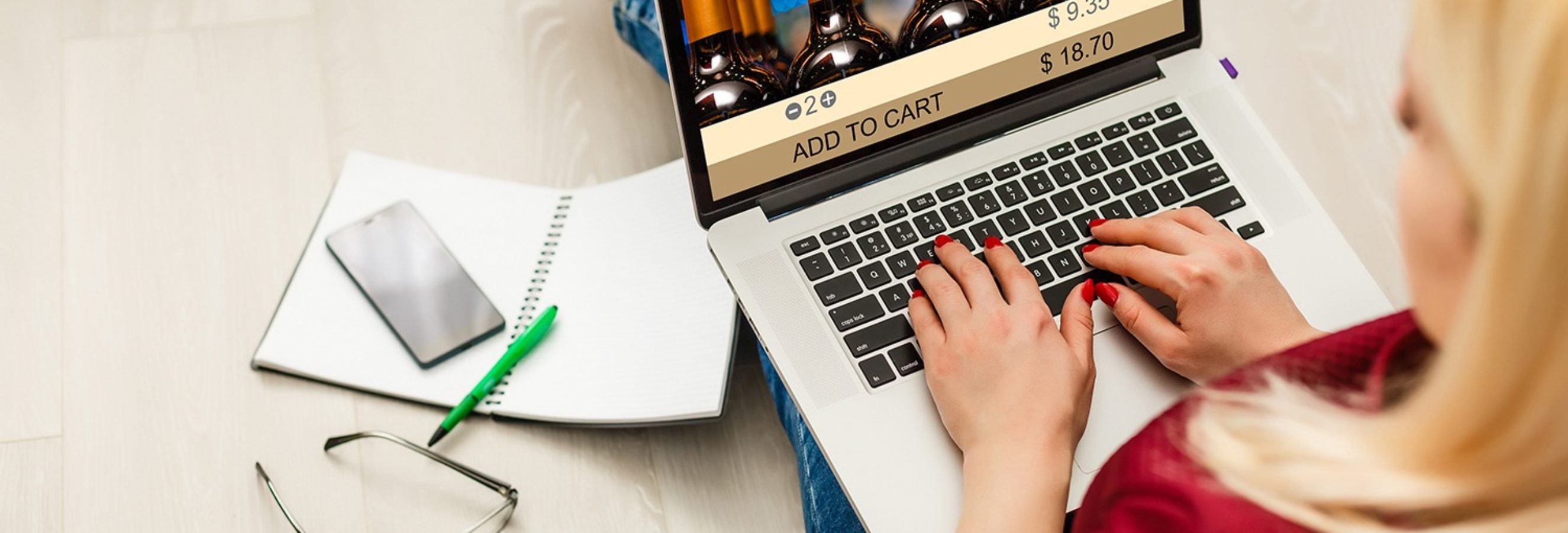Like every other category, alcohol sales are shifting online. It’s taken longer than other products due to age-gating and government distribution laws, but the path has been paved. Perhaps the biggest reason for the change is the shift from brick-and-mortar to online in general. After all, if you’re ordering groceries online anyway, why not add alcohol to your shopping list while you’re at it? Couple this trend with the growing number of click-and-collect services and the adoption of mobile apps that offer immediate gratification through on-demand delivery and online sales of alcohol are certain to keep growing.
Perhaps an even bigger reason is the expanding population of drinking-age consumers. 75+ million millennials are coming of age to buy alcohol and that’s only in the US. The youngest millennials turned 21 in 2015. Just as they do with any other product, these tech-savvy consumers expect to buy beer, wine, and spirits with the simple tap of a smartphone.
The sale of alcohol online, particularly in the US compared to Europe, is a relatively immature category so there’s tons of room for growth. Data from the UK shows as many as 34% of beer consumers routinely buy beer online compared to just 4% in the US. In North America, the online sale of alcohol is just getting started.
Factors that will drive future online sales include:
1. “Challenger” Brands
“Challenger” brands are brands like craft beers that have a larger-than-life online presence and offer something unique and experiential. They are growing in popularity and cater to aficionados around the world who search the web for something different.
2. More Online Alcohol Platforms
The way consumers shop for and order alcohol has changed. For example, Drizly (2012 launch) operates alcohol marketplaces where shoppers can browse the inventory of multiple stores simultaneously and compare price and availability, having it delivered within the hour. They operate in more than 40 markets across Canada and the US.
3. Event-Driven Sales
In addition to the big sports events like the Superbowl and the World Cup, a host of other “drink-worthy” events are appearing such as red-carpet events and Bachelor viewing parties. A collection of wines inspired by reality TV shows can be purchased through Amazon Wine, BachelorWines.com and other sites.
4. Online Convenience
Convenience, ease of click-and-collect pickup, home delivery, ability to compare products and prices, and way better selection, especially for wine, are all attributes of buying spirits online that will drive growth.
5. Millennials have Huge Spending Power
The last of the millennials reached the legal drinking age in the US of 21 in 2015. Like everything else, they want to buy their alcohol online and will have an estimated USD3.8 trillion in spending power according to Pew Internet/Javelin Research.
So, what can alcohol brands do to influence online shopper behavior?
1. Support Traditional Retailers Online Efforts
Provide imagery and enriched video content to grocers like Kroger and Walmart to support their online efforts. This creates credibility of these retailers in the minds of consumers as a destination for alcohol both online and in-store.
2. Create a Digital Branding Strategy
Like other brands that have moved online, ensure consistent, accurate and detailed product content across all eCommerce channels: Amazon, grocery retail sites, on-demand mobile apps and their own brand websites.
3. Have an Amazon Strategy
Amazon is where shoppers go to compare prices and read reviews and is the biggest online retailer. Keep an eye on what it’s doing. It’s only a matter of time before Amazon figures out how to disrupt the alcohol industry as it has the wine industry.
4. Supply Compelling Online Content
Alcohol brands can excel at providing stellar content. Party planning tips, drink recipes, story behind the bottle are all ways to stand out.
5. Partner with Digital Disrupters
On-demand online ordering apps like Drizly already have a large online presence and are getting seed money to fuel online alcohol growth. Collaborate with them to improve brand placement and offer promotions to drive conversions and purchases.
The path to purchase for liquor is changing as online models to sell alcohol expand. Liquor brands that adapt to meet changing consumer needs wants and shopping patterns will be in the best position to take advantage of the new path to purchase. If you are interested in understanding the path to purchase for your brand contact us about DecisionPATH.
